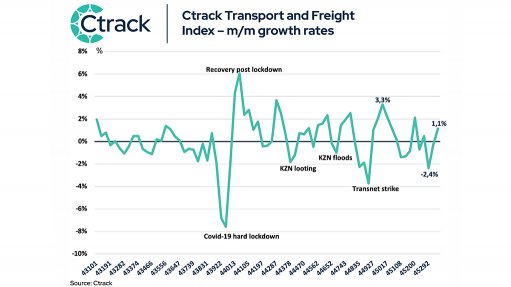Partnerships key to business optimisation beyond the factory gate
In this, the third article in a five-part series, Max Smeiman and Garth Strachan highlight the need for a common language to ensure optimal demand planning, sourcing, manufacturing and delivery in procurement and supplier development in the technical value chain (TVC). Item identification, set out in the second article, published in the July 29 edition of this magazine, is a pivotal concept and process requirement to trade efficiently in the TVC. Proficiency and application of this language is an important indicator of the level of value chain maturity, and enhancing its application is a prerequisite for global competitiveness.
Post-Covid-19 Uncertainty
Planning for a post-Covid-19 industrial landscape must raise the obvious question of whether or not the concepts and processes of the Fourth Industrial Revolution (4IR) should be used to provide a ‘leapfrog’ opportunity for the TVC (and the domestic economy) or will suboptimal adoption of 4IR standards in the technical industries continue to constitute a barrier to South Africa’s competitiveness?
A post-Covid-19 world will increasingly require ‘supercharged’ collaborative partnerships, which enable business optimisation beyond the factory gate. It is more than likely that those industries that do not adopt 4IR standards and adapt to new competitive realities will not survive in the longer run. Companies in the domestic TVC have been slow to adopt the value chain concepts and practices used with great success by the consumer packaged goods and retail (CPG&R) and automotive sectors.
Rebooting Technical Value Chains
The fine line between collusion and the critical importance of collaboration is accentuated by low value chain maturity in technical industries. This applies equally, and possibly more so, to public-sector procurement. Mature, efficient and cost-effective value chains require collaboration to follow after supplier qualification and the conclusion of commercial terms in procurement processes. The technical component of collaboration encompasses well-defined methodologies which align business processes, secure advanced technology application and data structures to ensure visibility and coordinated actions across the value chain.
Doing ‘old concepts’ well
The methods created by the Toyota Production System (TPS) since 1948 are central to the success of the global automotive industry and are viewed as value chain ‘gospel’ today. TPS application has ‘spilled over’ into many other industry sectors, which registered significant performance improvements as a result. The CPG&R industry, for example, was an early adopter of Efficient Consumer Response (ECR) in the early 1990s. Adoption of ECR fundamentally changed the manner in which value chains are optimised to improve supply performance and enhance customer service levels in the sector. At the core of both the TPS and ECR systems is a ‘language’ which describes and enables the processes of demand collaboration, the alignment of business processes beyond the factory gate and the deployment of enabling technologies.
The multiple efficiency gains within the CPG&R sector are undeniable. Snail’s-pace adoption of these methodologies and/or the misconception that these systems cannot be applied to or will not work because the technical industries are different holds little water. It is not far-fetched to suggest that mining companies should undertake a careful examination of the processes and systems in a competitive cheese factory in the CPG&R sector that enable that enterprise to optimise its value chain in a fiercely competitive environment.
The Need for a Common Technical Value Chain Language
A key defence-industry lesson is that diminishing domestic competitiveness reduces the extent to which domestic buyers can support local manufacturers. The input costs of domestic companies in the technical industry value chain will continue to rise unsustainably, unless there is a collective agreement that a common competitiveness framework to direct future industrial policy is developed. Existing and mature best-practice language can be adopted for the technical value chain. The following summary provides a reference:
•
The Supply-Chain Operations Reference (SCOR, APICS) model, developed and adopted from 1996, is a mature framework for supply-chain management. It creates a common language between buyers and sellers designed to optimise, integrate and execute complex value chains.
•
The Collaborative Planning, Forecasting and Replenishment (CPFR, VIC and GS1) system enables digital collaboration with standard work flows and integration methods between supply chain partners. It was spearheaded by manufacturing companies with support from companies such as Walmart, IBM and SAP.
•
The American Productivity and Quality Centre (APQC) Process Classification Framework® provides a mature taxonomy of business processes and the means to benchmark performance across value chains.
•
The Open Group’s Mining Business Reference Model provides an initial first step to describe the mining business model but does not explicitly incorporate the value chain models discussed above. It is assumed that the system will increasingly gain industry support and grow in maturity.
•
Systems engineering was introduced by the Bell Telephone Company in the 1940s. Systems engineering is an interdisciplinary approach to enable a focus on design, integration and economic management of complex systems over their life cycles. It is most probable that asset-intensive firms in the domestic economy have neglected the fundamental premise of systems engineering and replaced this with a mindset of “production at all or any cost”. This suboptimal practice is the root cause of escalating maintenance, repair and operations costs to companies in the technical value chain.
In the view of these authors, it is imperative that companies in the TVC become proficient in all the systems summarised above. Proficient application constitutes a precondition for the enhancement of value chain maturity and the global competitiveness of companies in the value chain. ISO 55000 formalised systems engineering and provides the platform for large technical industries to reduce input costs and remain economically viable. As is the case with ISO 9001, suppliers can then voluntarily choose to adopt these standards or face exclusion from the technical value chain.
Conclusion
The cost of South Africa doing nothing will be high. A new digital world will inevitably and increasingly redefine competitive landscapes. This requires decisive action from both industry and government. In circumstances where the domestic economy has witnessed an ongoing process of deindustrialisation, 4IR will likely further accelerate the process. The urgent adoption of business process best practice in the technical value chain is required to ‘bootstrap’ companies to reach global competitiveness. Large domestic companies – ‘domestic champions’ in the mining, chemicals and State-owned enterprises space – with government support must demonstrate the leadership and application required to digitalise key value chains. In the absence of this, talk of 4IR will remain as hollow rhetoric.
Comments
Announcements
What's On
Subscribe to improve your user experience...
Option 1 (equivalent of R125 a month):
Receive a weekly copy of Creamer Media's Engineering News & Mining Weekly magazine
(print copy for those in South Africa and e-magazine for those outside of South Africa)
Receive daily email newsletters
Access to full search results
Access archive of magazine back copies
Access to Projects in Progress
Access to ONE Research Report of your choice in PDF format
Option 2 (equivalent of R375 a month):
All benefits from Option 1
PLUS
Access to Creamer Media's Research Channel Africa for ALL Research Reports, in PDF format, on various industrial and mining sectors
including Electricity; Water; Energy Transition; Hydrogen; Roads, Rail and Ports; Coal; Gold; Platinum; Battery Metals; etc.
Already a subscriber?
Forgotten your password?
Receive weekly copy of Creamer Media's Engineering News & Mining Weekly magazine (print copy for those in South Africa and e-magazine for those outside of South Africa)
➕
Recieve daily email newsletters
➕
Access to full search results
➕
Access archive of magazine back copies
➕
Access to Projects in Progress
➕
Access to ONE Research Report of your choice in PDF format
RESEARCH CHANNEL AFRICA
R4500 (equivalent of R375 a month)
SUBSCRIBEAll benefits from Option 1
➕
Access to Creamer Media's Research Channel Africa for ALL Research Reports on various industrial and mining sectors, in PDF format, including on:
Electricity
➕
Water
➕
Energy Transition
➕
Hydrogen
➕
Roads, Rail and Ports
➕
Coal
➕
Gold
➕
Platinum
➕
Battery Metals
➕
etc.
Receive all benefits from Option 1 or Option 2 delivered to numerous people at your company
➕
Multiple User names and Passwords for simultaneous log-ins
➕
Intranet integration access to all in your organisation


















